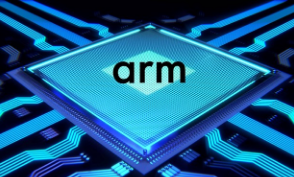- Ameya360 Component Supply Platform >
- Trade news >
- Arm Grabs Stream for IoT Services
Arm Grabs Stream for IoT Services
Arm acquired Stream Technologies (Glasgow) in an effort to grow a business in paid services for devices on the Internet of Things. The move comes as the IoT is still in an early stage but widely seen to have huge potential with services expected to be one of its hottest sectors.
Stream, a private company founded in 2000, claims that its connectivity management software and services are used by 770,000 devices carrying 2 terabytes of traffic daily. Though mainly focused on cellular, its offerings are network-agnostic, also supporting LoRa and satellite nets carrying IP and non-IP data.
Stream serves a wide variety of applications including asset tracking, smart meters, and the U.K.’s National Rail system. Its services include support for billing and the so-called embedded subscriber identity module (eSIM), a software-based cellular ID. Earlier this year, Arm rolled out software that it called Kigen OS to enable eSIM on its cores.
Arm will integrate Stream’s products into its nascent Mbed IoT services. Arm did not disclose how much it paid for Stream, the size of Stream’s revenues, or the size of its own nascent IoT services business.
The deal is likely one example of how Arm is reaching far beyond the processor core sector that it dominates with encouragement from its new owner, Softbank. Arm already works with IBM to connect IoT deployments to the IBM Watson Cloud and plans other such deals.
“We will build out and monetize cloud services and partner to make an open environment,” said Hima Mukkamala, general manager of Arm’s IoT Cloud Services group.
IoT services are “the carrot that everyone chases,” said Christopher Rommel, vice president of embedded research at market watcher VDC Research Group, Inc.
Although Rommel hadn’t heard of Stream prior to the acquisition, he was bullish on the deal.
“Arm is well-positioned for this with its channel in software and tools. The challenge is walking the line between offering its own services and those of partners. It makes sense for them to go after services, but it’s a complex and crowded space.”
Arm’s effort in IoT software and services started in 2013, when its acquired Sensinode. The startup had software that Arm offered for free as the Mbed OS supporting popular web scripting languages. But users called for better real-time determinism and support for the C language, so Arm reworked Mbed OS around the RTX kernel of Kiel, he said.
Since then, Arm has added various services to its portfolio, planting seeds for an IoT market that’s still in its infancy.
One survey showed that most end users are still 1 to 5 years away from deploying IoT. Source: VDC Research.
The overall IoT market is “not where I would have hoped it would be five years ago … but there are more rollouts and real work happening; the next level is moving beyond experiments,” said Rommel.
“IoT is just beginning to get off the ground,” said Nigel Chadwick, CEO of Stream. “It’s an amazing opportunity going forward.”
“What’s exciting to us is the volume we see from customers … I’m starting to see [deployments] going beyond pilots,” said Mukkamala of Arm. “We sold 100 billion cores in the last 25 years and expect to sell the next 100 billion in the next five years into things like smart meters, where customers want an end-to-end solution.”
Online messageinquiry

ARM Offloads Chinese Joint Venture Stake

Arm Targets Laptop Performance

ARM Under Attack in AI
- Week of hot material
- Material in short supply seckilling
| model | brand | Quote |
|---|---|---|
| MC33074DR2G | onsemi | |
| TL431ACLPR | Texas Instruments | |
| RB751G-40T2R | ROHM Semiconductor | |
| CDZVT2R20B | ROHM Semiconductor | |
| BD71847AMWV-E2 | ROHM Semiconductor |
| model | brand | To snap up |
|---|---|---|
| TPS63050YFFR | Texas Instruments | |
| BP3621 | ROHM Semiconductor | |
| ESR03EZPJ151 | ROHM Semiconductor | |
| IPZ40N04S5L4R8ATMA1 | Infineon Technologies | |
| BU33JA2MNVX-CTL | ROHM Semiconductor | |
| STM32F429IGT6 | STMicroelectronics |
- Week of ranking
- Month ranking
Qr code of ameya360 official account
Identify TWO-DIMENSIONAL code, you can pay attention to


Please enter the verification code in the image below:























